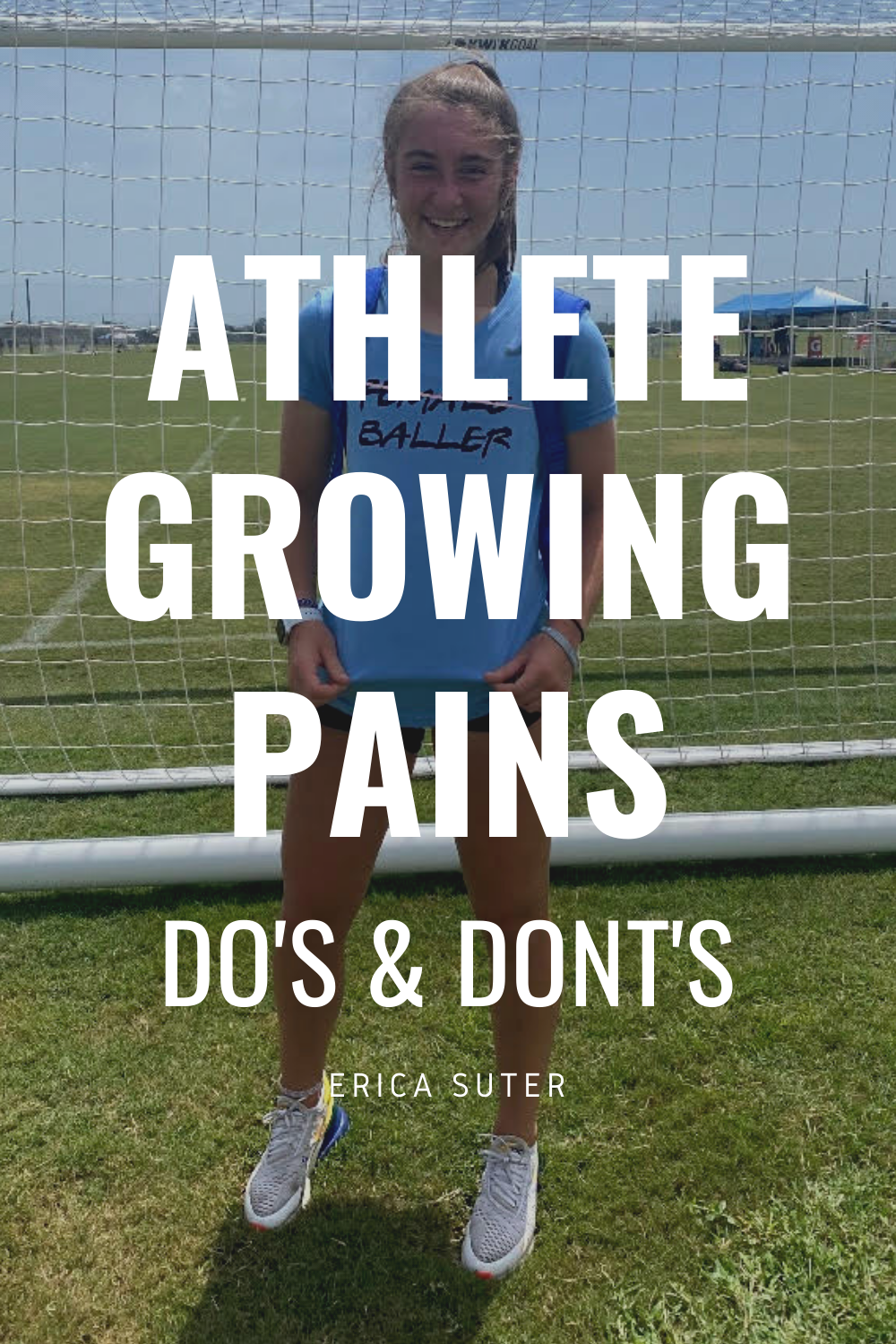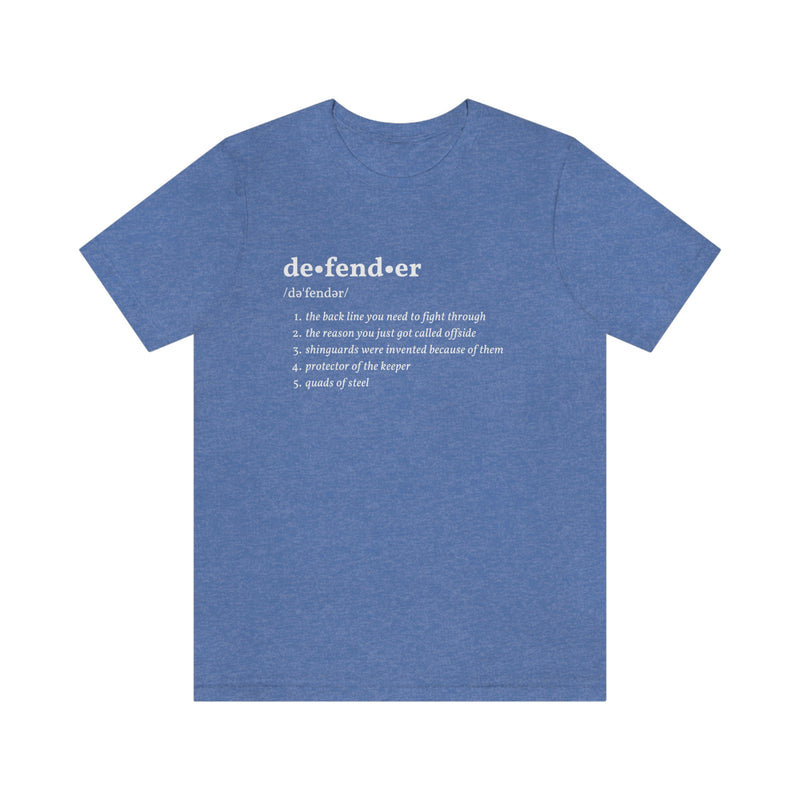

"It's growing pains."
Have heard these words before?
Chances are, if you're a growing female athlete, you have. And while the intent of your coach’s or parent’s words were out of care, we can't ignore this prevalent issue that leaves thousands of girls sidelined from sport.
Knee pain is one of the most frustrating and nagging experiences for a pre-adolescent and adolescent girl, and can hinder performance, as well as keep her out of her game for several months.
Of course, growing pains are a natural part of growth, as the quadriceps muscle pulls on the patellar tendon and in turn, pulls on the tibial tubercle, causing inflammation and stress in this area. This occurs during the most rapid periods of growth (average age for girls 12.4) as the bones grow faster than the muscles and tendons.
This physiological change is something that isn't in your control, but this doesn't mean you brush it off as growing pains and continue business as usual. Still running. Still loading the knee joint. Still causing duress. Still doing sharp change of direction.
Let me ask you this: how is that working for you?
Is pushing past the pain making things better?
Alas, if you’re still in pain, it means you have to do more work to ensure you are strong - not only so you’re pain-free, but you can return to the field better than you were before injury.
You can't ignore knee pain. Ever.

With that said, it's paramount you take the proper steps when you are experiencing the negative side effects of growth.
You need to be treated with care, not ignorance.
You need to be encouraged to get strong, not push through pain.
So let's dive into the Do's and Don'ts of knee pain for female athletes:
1. DO recognize the problem.
Knee pain typically happens right on top of the knee cap. Sometimes it begins dull, then progresses to an excruciating ache. If dull pain in this area persists for a few weeks, we have a problem here.
This brings me to my next point...
2. DON'T ignore it.
Oh, so something hurts? Yeah, get that checked out.
The worst scenarios I've seen with young girls is they wait too long to see a doctor, get a referral, and find a physical therapist. They try to plow through the agony, leaving them with decreased performance, both physically and mentally, and eventually, it turns into a chronic problem that haunts them for many years.
Speaking of getting checked out..
3. DO seek help from a professional.
Finding a physical therapist is the best thing you can do when your knee pain refuses to subside.
Too, let me emphasize this: doing a full strength and conditioning program is meant for healthy athletes with no pain, unless the strength coach and physical therapist are collaborating on the exercises done in the clinic and the movements done in the gym.
Recent studies have confirmed that quadriceps and hip strengthening combined with stretching in a structured physiotherapy program comprise the most effective treatment for reducing knee pain symptoms and improving functionality in patients with Patellofemoral Pain Syndrome (Rixe et al. 2013).

If you have knee pain, take care of that first before jumping into the entirety of a strength and conditioning plan. As an example, you may have to focus on the strength and flexibility work given by the PT and executed by the strength coach, as well as cut out running and conditioning altogether.
Make use of all professionals and their collaboration. They are there to help you succeed.
4. DON'T push through the pain. If something is painful, stop.
It's common sense.
According to Stein and Ackerman in The Young Female Athlete, patellar pain is worse with increased activity and running, which means this is everyone's cue to stop running, plowing through practice, and doing high volume plyometrics.
Even if the pain is meager, do alternative forms of activity that help strengthen the muscles around the knee, as well as work on flexibility.

Studies have shown that lack of firing in the quadriceps (vastus medialis), weakness of the hips, and lack of flexibility in the gastrocnemius all can increase stress on the patella. According to Waryasz and and McDermott, physical training including sport-specific cardiovascular training, plyometrics, sport cord drills, strength and flexibility training has been found in adolescent female soccer players to significantly reduce lower body injury incidence from 33.7% to 14.3% (Waryasz & McDermott 2008).
Let's segue to the next point...
5. DO make time for consistent resistance training.
The muscles around the knee that support it's stability and ability to handle load aren't going to build themselves, or with you daydreaming about their pain magically withering away.
So this bears repeating: you need to make time for year-round strength and plyometric training that is gradually progressed and meticulously coached.

'Wow, that's so simple, Erica!' you exclaim.
Alas, it is.
But simple can be hard to do.
The strength work is the hard work that takes consistency over a long period of time, but it is what will ensure you stay robust and resilient to nagging knee pain:
You may have to hire a strength coach. You may have to set aside time to work out. You may have to spend money.
But yo.
Good training isn't an expense. It's an investment in a pain-free future and confident career.
7. DON'T think strength is only solution.
Strength training is just one piece to the knee pain puzzle. There are many buckets to performance and injury reduction, including, nutrition, sleep and recovery.
Is there one bucket that needs more filling?
Do the surrounding muscles of the knee have the energy from food to not get fatigued?
Is your nervous system wiped out from too much screen time and going down the Tik Tok rabbit hole?

Did you get quality, uninterrupted sleep for 6-8 hours?
Did you hydrate with fruits, veggies and water?
Did you warm-up properly and ensure the quadriceps muscle was stretched out?
Or did you roll your eyes and rush through the warm-up?
If these buckets aren't being filled, knee pain only exacerbates.
It doesn't matter how strong you are, all of these other components matter when it comes to pain-free and focused performance.
8. DO monitor load and recover hard.
I've spoken about in-season training and recovery numerous times. You can go HERE, HERE and HERE to learn why it's imperative to incorporate recovery workouts into your routine, as well as have a strength and conditioning professional to manage load during the busy season.
For one, you can tweak sets and reps for movements so you continue to stay strong, but not get sore.
And two, you can know when to cut back on strength days and sprinkle in light movement to clean out waste in the muscles:
They also can work on deep belly breathing to calm the nervous system:
9. DON'T under-fuel.
Oh, so you had a banana for breakfast before playing every minute of a full match?
That's adorable!
It's no wonder you’re dragging to get to your first sprint, are unable to sustain explosive actions in the second half, and are returning to faulty motor patterns that aggravate the knee even more.
I urge you to watch this video on how under-fueling and eating low-calorie diets are detrimental to the growing female athlete.
You must reduce injury risk with both smart training and fueling.
10. DO a proper warm-up.
The warm-up is the best time to work on movement quality that will help take stress off the patella tendon.
Several things that can be done are working on coordination, hip activation, trunk stability, dynamic stretching of muscles around the knee, and ankle dorsiflexion.
Here are some sample movements:
11. DON'T rely on tape products, braces or R.I.C.E.
"Just put tape or a brace on the knee!"
"Just ice the pain away!"
Ugh.
Let me also ask you this: do taping and bracing and icing solve the entirety of knee pain? In other words, do these products strengthen the muscles around the knee, work on quality movement of the athlete or promote a long-term solution to alleviating pain and preventing worse injury down the line?
Taping, bracing and icing act as merely band-aids to the knee pain issue.
Sure, recent studies of bracing and taping have found them to be helpful for patients in the short-term management of pain and improving function.
However, less is known about their exact mechanism, and studies are encouraging that they have a subtle role in changing patellofemoral biomechanics (Pelletier et al. 2019).

I am not totally against taping, but it is critical to think long-term prevention strategies and not see taping as the panacea to knee injuries. Taping doesn't fix inefficient, awkward movement. Nor does it entirely fix recruitment of the surrounding muscles and their ability to handle high forces.
I'm going to venture down the offbeat path with a modern example.
This quick fix nonsense is tantamount to the current narrative today: "just stay inside, hide from the virus, wait for a vaccine and all your woes will be solved!"
But wait.
What about the next virus? Then the next? Then the next? Will you be ready? Will the vaccine solve your diabetes? Your obesity? Your clogged arteries? Your already horrific conditions that make your body's response to viruses worse?
Prepare your immune system now. Eat well. Sleep. Move. Get sunlight. Stay connected. Walk. Hydrate. Adapt. Think long-term solution, not short-term band-aid.
Alas, I digress.
Taking the conversation back to knee pain, sure, taping and bracing and icing provide short-term pain relief, but you are doing yourself a disservice by ignoring the other holistic ways to set yourself up for success in the long run.
Adolescent girls with increased knee abduction during landing may be at increased risk for both patellofemoral pain and ACL injury (Myer et al. 2015).
To that end, strengthening the muscles and working on mechanics now will reduce the chance of worse injuries down the road, like ACL and meniscus tears.
12. DO work on mechanics.
Two of the biggest problems I see, and I've attributed to the cause of patella pain in young female athletes, are not enough focus on athletic stance and ankle dorsiflexion year-round.
Again, the warm-up is the best time to work on these, instead of jogging around the pitch and making these movement patterns even worse.
If you struggle to get into an athletic stance with trunk stability and hip loading, then she is more likely to have a forward lean posture, putting more load on the knee joint. Here is a video explaining how this works:
Too, if you struggle with ankle dorsiflexion for acceleration and speed work, she will be a "toe runner" instead of a "ball-of-foot runner" which also puts stress on the knee. You will also be slower!
Here is a video explaining how this works:
13. DON'T roll your eyes at at-home prehab.
Seeing a physical therapist is just a sliver of what needs to be done. More often than not, they will give young girls prehab to do at home to ensure they continue to progress in muscle strength around the knee.
You can't ignore the self work.
Again, you see this in the current, fear-based, wait for a quick fix, narrative today. Be proactive, rather than reactive. Step back into your power and put in the thousands of brush strokes a day to take care of your health and resiliency for the field and life.
14. DON'T be stupid.
I said this before but can't repeat it enough: if something is painful, don't keep doing it.
You have to ask yourself this question when you’re in pain: is what I’m doing currently working for me, or making this worse?
Moreover, you have to ask yourself, ‘is what I’m currently doing serving me to be the best athlete and human for a lifetime?’
The end.
_______________________________
ABOUT THE AUTHOR Erica Suter is a certified strength and conditioning coach in Baltimore, Maryland, as well as online for thousands of youth soccer players. She works with kids starting at the elementary level and going all the way up to the college level. She believes in long-term athletic development and the gradual progression of physical training for safe and effective results. She helps youth master the basic skills of balance, coordination, and stability, and ensures they blossom into powerful, fast and strong athlete when they’re older. She has written two books on youth strength and conditioning, Total Youth Soccer Fitness, and Total Youth Soccer Fitness 365, a year-round program for young soccer players to develop their speed, strength and conditioning.
Erica Suter is a certified strength and conditioning coach in Baltimore, Maryland, as well as online for thousands of youth soccer players. She works with kids starting at the elementary level and going all the way up to the college level. She believes in long-term athletic development and the gradual progression of physical training for safe and effective results. She helps youth master the basic skills of balance, coordination, and stability, and ensures they blossom into powerful, fast and strong athlete when they’re older. She has written two books on youth strength and conditioning, Total Youth Soccer Fitness, and Total Youth Soccer Fitness 365, a year-round program for young soccer players to develop their speed, strength and conditioning.
Follow Erica on Twitter and Instagram and book a discovery call to become an online client HERE.
REFERENCES
Pelletier, A., Sanzo, P., Kivi, D., & Zerpa, C. (2019). The effect of patellar taping on lower extremity running kinematics in individuals with patellofemoral pain syndrome. Physiotherapy theory and practice, 35(8), 764-772.
Rixe, J. A., Glick, J. E., Brady, J., & Olympia, R. P. (2013). A review of the management of patellofemoral pain syndrome. The Physician and sportsmedicine, 41(3), 19–28. https://doi.org/10.3810/psm.2013.09.2023
Stracciolini, A., Stein, C.J. (2018). Overuse Injuries in Young Female Athletes. In C. J. Stein (Author), YOUNG FEMALE ATHLETE (p. 75). Place of publication not identified: SPRINGER.
Waryasz, G. R., & McDermott, A. Y. (2008). Patellofemoral pain syndrome (PFPS): a systematic review of anatomy and potential risk factors. Dynamic medicine : DM, 7, 9. https://doi.org/10.1186/1476-5918-7-9



OnfPwcBYuXK
BiaOHnrJNlTRxE
kfixFKHdwbYAyWqQ
xyLRXpQAke
ZwPyOqzpdJglWYSF
CZedxsNSgkhuHiJz
aJNTRBFpoUMkh
YsBoihAIuG
OkcwayXAtriFuL
wcYQloPjkv